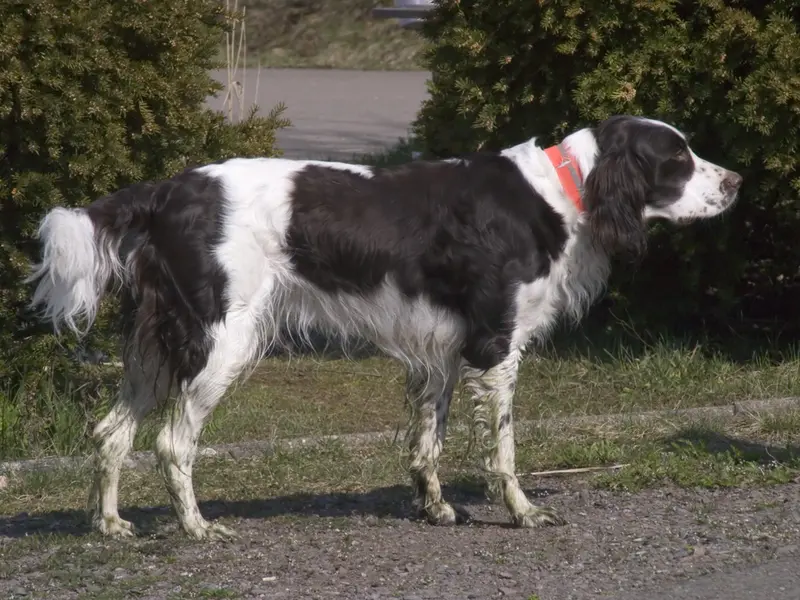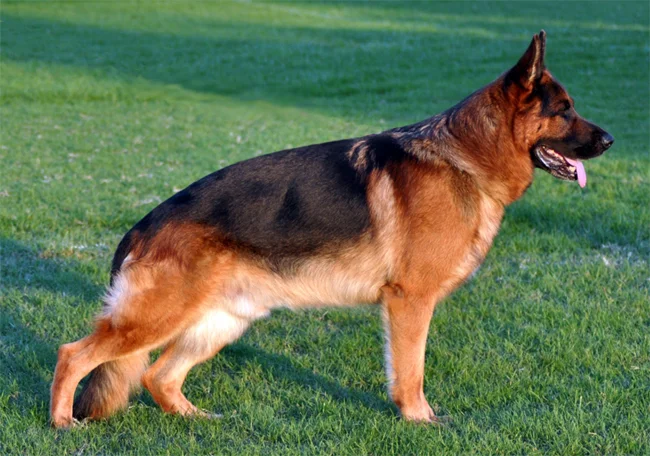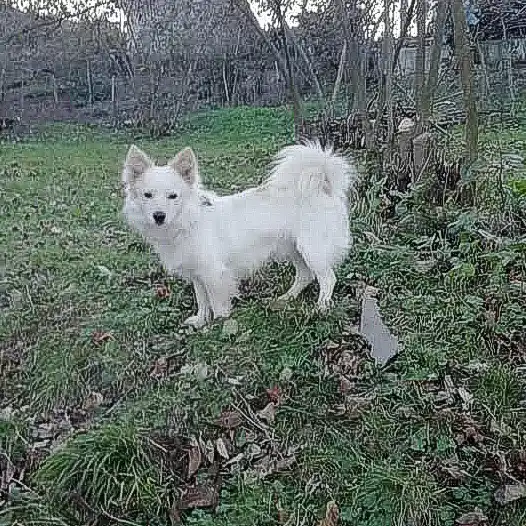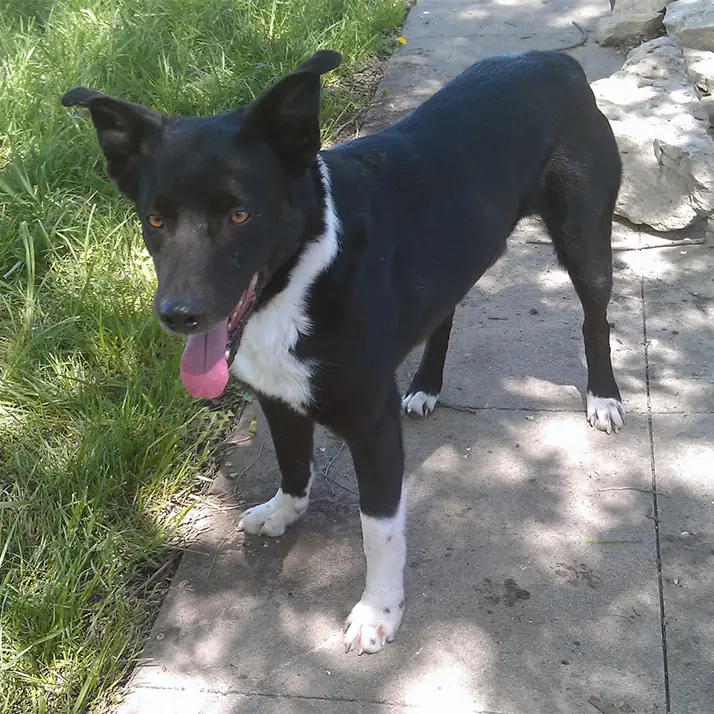Wetterhoun
The Wetterhoun, or Frisian Water Dog, is a medium-sized, loyal breed known for its hunting abilities and affectionate nature. With a unique curly coat and a strong will, they require regular exercise and early training to thrive.
Overview
🐕Breed Overview
✨Key Traits
💡What Makes Wetterhoun Special
Wetterhouns are distinguished by their unique combination of hunting ability and family-friendly temperament. They are natural swimmers, excelling in water retrieval tasks, which is a testament to their historical role as hunting companions.
Their strong will and perseverance mean they are dedicated to completing tasks, making them reliable partners in various activities. Additionally, their sensitivity requires gentle training methods, as harsh treatment can lead to anxiety.
Their adaptability allows them to thrive in both rural and urban settings, provided they receive adequate exercise and social interaction.
The Wetterhoun, also known as the Frisian Water Dog, is a unique and versatile breed originating from the Netherlands, specifically the province of Fryslân. With a history dating back over 400 years, this medium-sized dog was traditionally employed as a hunting companion, adept at retrieving small mammals and waterfowl. The Wetterhoun's distinctive appearance features a thick, curly coat that is water-resistant, making it well-suited for its aquatic hunting tasks.
6 to 23 inches tall and weighs between 55 to 77 pounds, showcasing a robust and athletic build. Temperamentally, the Wetterhoun is known for its strong will and natural guarding instincts, making early training and socialization essential. While they are reserved with strangers, they are affectionate and loyal to their families, often forming strong bonds with children.
Their playful and energetic nature requires regular exercise, ideally involving activities like swimming, fetching, and agility training. Wetterhouns thrive in environments where they have space to roam and play, making them best suited for homes with large yards or access to open areas. They are adaptable but can become bored or anxious if confined for long periods.
Grooming needs are moderate, with regular brushing required to maintain their curly coat and minimize shedding. As a breed that nearly faced extinction during World War II, the Wetterhoun has made a remarkable comeback thanks to dedicated breeders and enthusiasts. Today, they are recognized by various kennel clubs and are gaining popularity as a rare and cherished companion dog.
Their unique blend of hunting ability, loyalty, and affectionate nature makes them an excellent choice for active families looking for a devoted pet.
🎉Fun Facts
The Wetterhoun is known for its unique curly coat that is water-resistant, making it an excellent swimmer.
This breed was nearly extinct during World War II but has made a remarkable comeback thanks to dedicated breeders.
Wetterhouns are known for their strong guarding instincts, making them excellent watchdogs without being aggressive.
Breed Characteristics
Family & Friends
Good Behavior
Get Up & Go
Household Harmony
Temperament & Personality
✨Key Traits
🐕Core Temperament
The Wetterhoun's temperament is a blend of loyalty, intelligence, and playfulness. They are known for their strong protective instincts, making them excellent family dogs that are both affectionate and watchful.
Their reserved nature around strangers does not translate to aggression; instead, they are calm and observant. Early socialization is crucial to ensure they are comfortable in various situations.
Wetterhouns are also known for their playful spirit, enjoying interactive games and activities with their families. Their intelligence allows them to learn commands quickly, but they require consistent training to channel their energy positively.
💫Personality Profile
The Wetterhoun is a breed characterized by its loyalty and affectionate nature towards its family. They are known to be reserved with strangers, which makes them excellent watchdogs.
Despite their strong guarding instincts, they are never aggressive and are generally very tolerant of children. Their playful and energetic demeanor requires regular exercise and mental stimulation to keep them happy.
Wetterhouns are intelligent and eager to please, making them relatively easy to train with positive reinforcement methods. They thrive on companionship and enjoy being involved in family activities.
🔊Vocal Tendencies
Wetterhouns are generally not excessive barkers, but they will vocalize to alert their owners of any unusual activity or strangers approaching. Their barking is typically reserved for specific situations, such as when they feel their family is threatened or when they are excited during playtime.
They may also express themselves through howling or whining, especially if they are seeking attention or feeling anxious. Overall, their noise level is moderate, making them suitable for various living environments without being overly disruptive.
Affection & Social Traits
Energy & Activity
Communication Style
Care Requirements
🏃♂️Exercise Requirements
Daily Exercise
The Wetterhoun is an active breed that requires a significant amount of exercise to maintain its physical and mental well-being. Ideally, an adult Wetterhoun should engage in at least 60 to 90 minutes of exercise daily.
This can be broken down into multiple sessions throughout the day, including brisk walks, runs, or playtime in a secure area. Activities such as swimming, fetching, and engaging in dog sports like agility or obedience training are particularly beneficial, as they cater to the breed's natural instincts and energy levels.
Puppies require shorter, more frequent exercise sessions to avoid overexertion, while senior dogs may need gentler activities to accommodate their health. Regular exercise helps prevent behavioral issues, such as anxiety or destructive tendencies, and contributes to overall health, including weight management and cardiovascular fitness.
Preferred Activities
🏠Living & Adaptability
Space Requirements
Wetterhouns thrive in environments where they have ample space to roam and play. While they can adapt to apartment living if given sufficient exercise, they are best suited for homes with large yards or access to open areas.
A securely fenced yard is ideal, as it allows them to explore and play safely. In smaller living spaces, owners must commit to regular outdoor activities to meet their exercise needs.
The breed's medium size and energetic nature mean that they can become bored or anxious if confined for long periods, leading to potential behavioral issues.
Climate Preference
🍲Feeding Guide
Schedule
Food Types
Portion Size
Special Nutritional Needs
Wetterhouns may benefit from a diet rich in protein and healthy fats to support their active lifestyle. It's important to monitor their weight and adjust portions accordingly, especially if they are less active. Some Wetterhouns may have food sensitivities, so introducing new foods gradually and observing for any adverse reactions is advisable.
✨Grooming Requirements
Grooming Overview
The Wetterhoun's coat requires regular grooming to keep it healthy and free from matting. Their thick, curly coat should be brushed at least once a week to prevent tangles and to remove loose hair.
During shedding seasons, more frequent brushing may be necessary. Bathing should be done as needed, typically every few months or when they become particularly dirty.
It's important to use a dog-specific shampoo to maintain the coat's natural oils. Regular checks of the ears, teeth, and nails are also essential for overall health, with nail trimming every few weeks as needed.
Care Schedule
Brush weekly; bathe every 2-3 months; trim nails every 2-4 weeks.
Health Profile
⚕️Health Care
Regular veterinary care, including vaccinations, dental check-ups, and preventive treatments, is essential for maintaining the Wetterhoun's health and longevity. Early detection of health issues through routine examinations can lead to more effective management and treatment options. Owners should also ensure their dogs receive proper nutrition and exercise to support their overall health throughout different life stages.
Health Issues Overview
⏳Average Lifespan
Genetic Factors
Genetics play a crucial role in the Wetterhoun's lifespan, with certain hereditary health issues, such as hip dysplasia and progressive retinal atrophy, being more prevalent in the breed. Responsible breeding practices that prioritize genetic diversity can help mitigate these risks. Potential owners should seek breeders who conduct health screenings and provide transparency regarding the health history of their breeding stock.
Living Conditions
Wetterhouns thrive in environments that provide ample space for exercise and play. Access to water for swimming is particularly beneficial, as it aligns with their historical role as water retrievers.
A balanced lifestyle that includes regular outdoor activities, social interactions, and mental stimulation can significantly enhance their lifespan. Additionally, a stable and loving home environment contributes to their overall well-being, reducing stress and anxiety that can negatively impact health.
🏥Common Health Issues
Hip Dysplasia
Warning Signs
🔬Diagnosis
X-rays and physical examination by a veterinarian.
💊Treatment
Medications, weight management, and in severe cases, surgery.
📝Management Tips
Maintain a healthy weight, provide joint supplements, and avoid excessive jumping or strenuous activities.
Progressive Retinal Atrophy (PRA)
Warning Signs
🔬Diagnosis
Veterinary eye examination and genetic testing.
💊Treatment
Currently, there is no cure; management focuses on adapting the environment.
📝Management Tips
Regular veterinary check-ups and monitoring for vision changes.
🛡️Preventive Care
🔬Hip Evaluation
Hip Evaluation assesses the hip joints for dysplasia and other abnormalities, which can affect mobility and quality of life.
📅 Annually after 12 months of age.
🔬Eye Examination
Eye Examination checks for hereditary eye conditions, including progressive retinal atrophy, ensuring early detection and management.
📅 Every 1-2 years, or as recommended by a veterinarian.
Training
🧠Intelligence & Trainability
💪Work Drive
Wetterhouns possess a strong work drive, stemming from their historical roles as hunting and retrieving dogs. They thrive when given tasks to complete, whether it's fetching a toy, participating in agility training, or engaging in scent work.
Providing mental stimulation through interactive games and training exercises is essential to keep them happy and fulfilled. Without sufficient mental and physical engagement, Wetterhouns may become bored and exhibit undesirable behaviors.
⚠️Training Considerations
Wetterhouns can exhibit strong-willed behavior, which may pose challenges during training. Their natural guarding instincts can lead to reserved behavior around strangers, requiring early socialization to ensure they are well-adjusted.
To overcome these challenges, consistent and positive reinforcement training methods are essential. Engaging them in activities that stimulate their minds, such as puzzle toys or obedience training, can help channel their energy and focus.
Patience and understanding are key, as harsh training methods can lead to resistance or anxiety in this sensitive breed.
📝Training Tips
Training a Wetterhoun requires a gentle yet firm approach. Positive reinforcement techniques, such as treats and praise, work best to motivate them.
Start with basic commands and gradually introduce more complex tasks, ensuring that training sessions are kept short and engaging to maintain their interest. Socialization is crucial from a young age to help them become comfortable with various environments, people, and other animals.
Consistency in commands and routines will help reinforce their learning. Regular training can also help prevent behavioral issues stemming from boredom or excess energy.
History & Heritage
📜Origin Story
The Wetterhoun's story begins in the picturesque province of Fryslân, where it was developed as a hunting companion for local fishermen and hunters. The breed's ancestors were likely bred from a combination of gypsy dogs and local water dogs, designed to excel in retrieving game from both land and water.
Over the centuries, the Wetterhoun became an integral part of the hunting culture in Fryslân, known for its ability to navigate marshy terrains and retrieve waterfowl. Despite facing near extinction during the tumultuous years of World War II, passionate breeders and fanciers dedicated themselves to preserving the breed, leading to its resurgence in popularity today.
The Wetterhoun is now celebrated not only for its hunting prowess but also for its loyal and affectionate nature, making it a cherished family companion.
⏳Development History
The Wetterhoun's development can be traced back over 400 years in the Dutch province of Fryslân. It is believed to have originated from a mix of gypsy dogs and indigenous Frisian breeds, possibly including the now-extinct Old Water Dog.
Initially bred for hunting otters and fitch, the Wetterhoun was also utilized for retrieving waterfowl and serving as a watchdog. The breed faced a significant decline during World War II, but dedicated enthusiasts worked to revive it through careful breeding practices.
Today, the Wetterhoun is recognized by the Fédération Cynologique Internationale and is gaining popularity as a unique companion dog.
🛡️Purpose & Historical Role
Historically, the Wetterhoun was bred for hunting small mammals and waterfowl in the wetlands of Fryslân. Its strong swimming abilities and keen sense of smell made it an effective retriever in both land and water settings.
The breed was also valued as a watchdog, known for its reserved nature and protective instincts. Over time, the Wetterhoun has evolved from a working dog into a beloved family pet, while still retaining its hunting instincts and versatility.
🏺Cultural Significance
The Wetterhoun holds a special place in Dutch culture, particularly in the province of Fryslân, where it has been used for centuries as a versatile hunting dog. Its unique abilities in both land and water retrieval have made it a valued companion for hunters.
The breed's name, derived from the West Frisian term for 'water dog,' reflects its historical role in hunting waterfowl and small mammals. The Wetterhoun's resilience and adaptability have allowed it to survive through challenging times, including near extinction during World War II, and it is now celebrated as a rare breed that embodies the spirit of its region.
Conservation Status
This breed is less common but has stable populations in certain regions.









